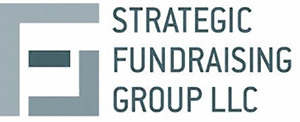
Is there a link between the state of the economy and fundraising? My first instinct is to say “Yup, you betcha,” especially having gone through “up and down” cycles during the last 30 years. For example, take the year 2008. Please! That’s when the economy started to tank and many nonprofits saw their fundraising revenue begin to dip.
Let me be very clear. Donors told me during good economies that’s why they gave generously. During lackluster times, donors complained to me why their donations were down. Pretty simple.
But, let’s stand back and take an objective view to arrive at the correct answer and understand the implications.
In a white paper prepared by Target Analytics entitled “The Macroeconomics of Fundraising,” the link is clear.
The nonprofit sector is not an island…. It represents about 5% of the economy in the United States….The macroeconomic factors that influence the rest of the U.S. economy necessarily influence the nonprofit sector as well, and often have a significant impact on the success—or failure—of fundraising efforts.
Without getting “into the weeds,” there are generally six factors that influence the level of philanthropic contributions in this country and they are: (1) income, (2) wealth, (3) tax policy, (4) interest rates, (5) unemployment rates and (6) population growth.
Research by the Giving USA Foundation tells us that fundraising dollars received by nonprofits show growth during strong economic upturns and display significant declines when the economy is sluggish. We have seen over time that individual giving is directly linked to people’s income and wealth. There is a psychology that permeates the economy when incomes rise and wealth proliferates. When the economy is robust, folks feel a sense of personal security and, thereby, are encouraged to give to their favorite causes.
When the S&P500 and the stock market have risen, so too have charitable contributions. No surprise here. But, what is interesting is that the connection between the S&P500 and donations is so strong that it is considered by some as the strongest predictor of altruistic gains by the nonprofit sector.
In 1917, Congress introduced the charitable deduction into the federal tax code. Unquestionably, this encouraged widespread investment in private philanthropy. By reducing their tax liabilities, higher income tax earners were encouraged to grant more in charitable gifts. In 1986, the Tax Reform Act demonstrated how tax policy adversely impacted donations when Congress eliminated a large number of deductions. The following year, giving from individuals dropped by more than a billion dollars!
Lower interest rates also affect different segments of the population when it comes to giving. For a younger group, lower rates for mortgages, car loans, business loans and the like can be very favorable for nonprofit giving as these folks find charitable ways to invest their money. On the other hand, lower rates can hurt older people whose returns on savings vehicles such as Treasury bills, certificates of deposit and mutual funds grow weaker. Under these circumstances, seniors may give less to the nonprofit sector.
As unemployment rates increase, logically, there appears to be a causative link between people who have less disposable income and the amount of money they give to charity. This doubtless holds true for those seeking employment and those who drop out of the labor force altogether.
Finally, statistical trends point to a shrinking donor pool in the overall population. The pool of possible donors is not as big now as it was 10 years ago. Part of the reason is that following the “baby boom” of the ’50s and early ’60’s, there was a “baby bust” in the late ’60s and ’70s. This latter group will enter their 50s in the next 10-15 years. So, don’t be surprised by dropping donor populations in the foreseeable future.
So, what are the implications of a strong economy and fundraising? Is your nonprofit well organized and prepared to take advantage of the cycle we are in right now? If true tax reform occurs in the current session of Congress, nonprofits stand to gain a great deal. It could even be a windfall. Is your organization ready?
By Norman B. Gildin
Norman B. Gildin has fundraised for nonprofits for more than three decades and has raised upwards of $92 million in the process. He is the president of Strategic Fundraising Group whose singular mission is to assist nonprofits raise critical funds for their organization. He can be reached at Norman@stfrg.com.










